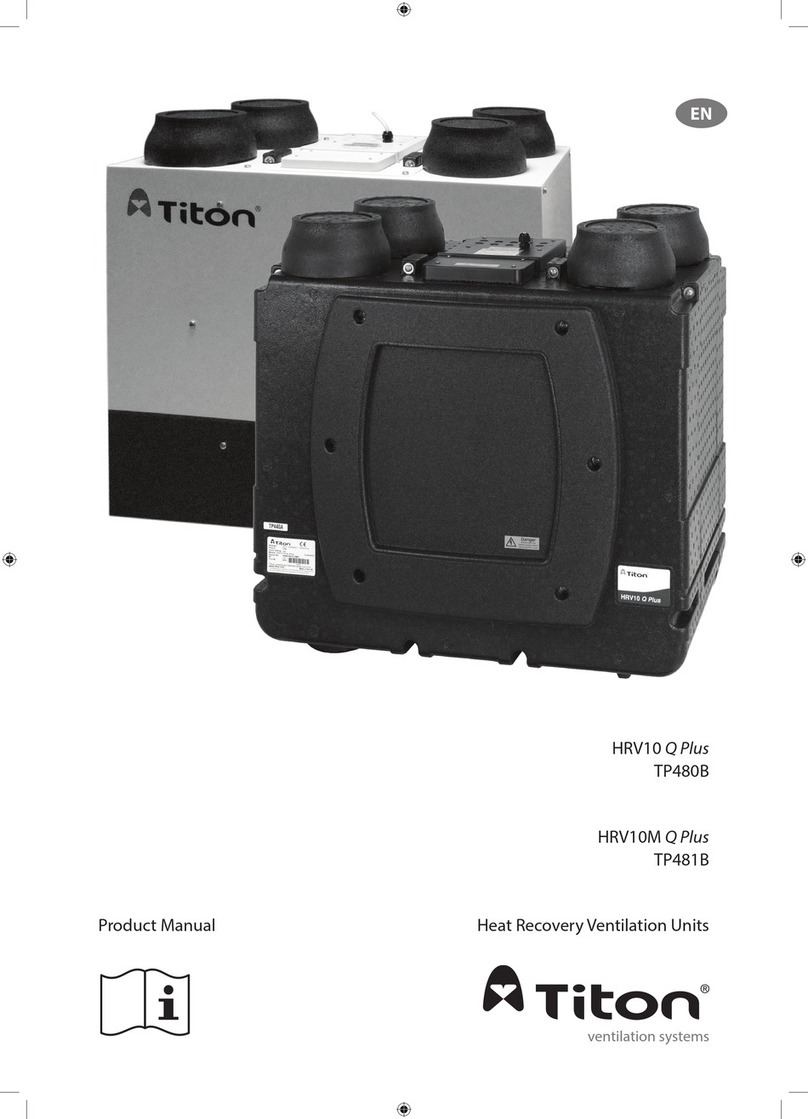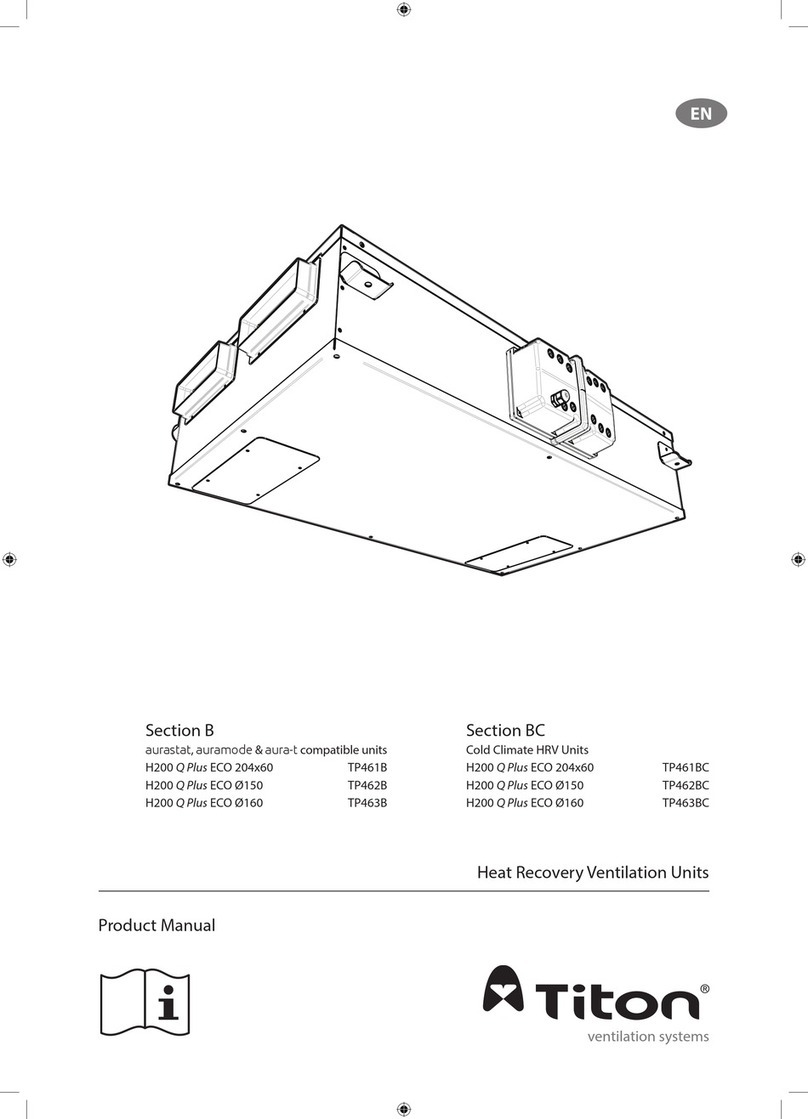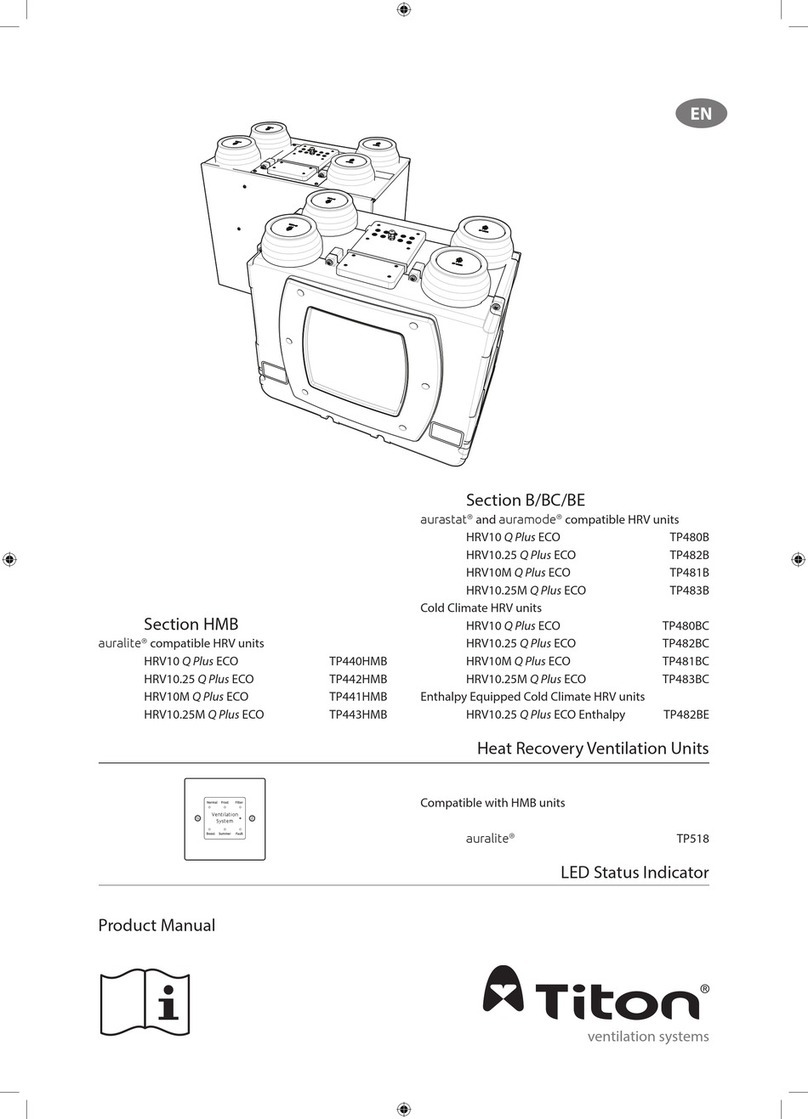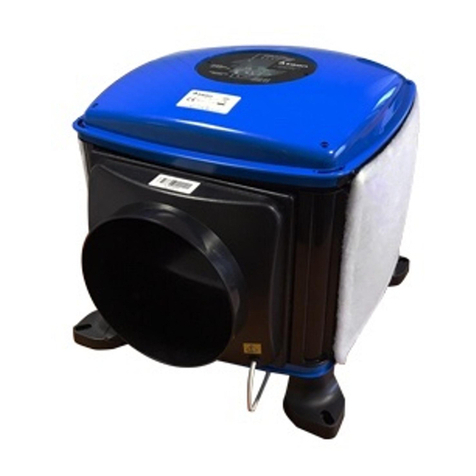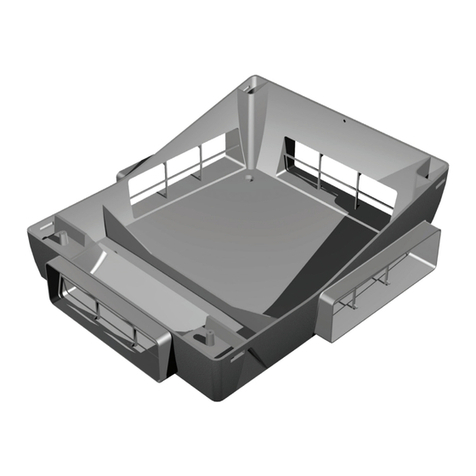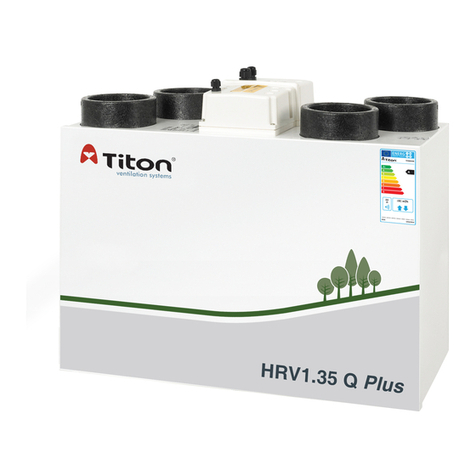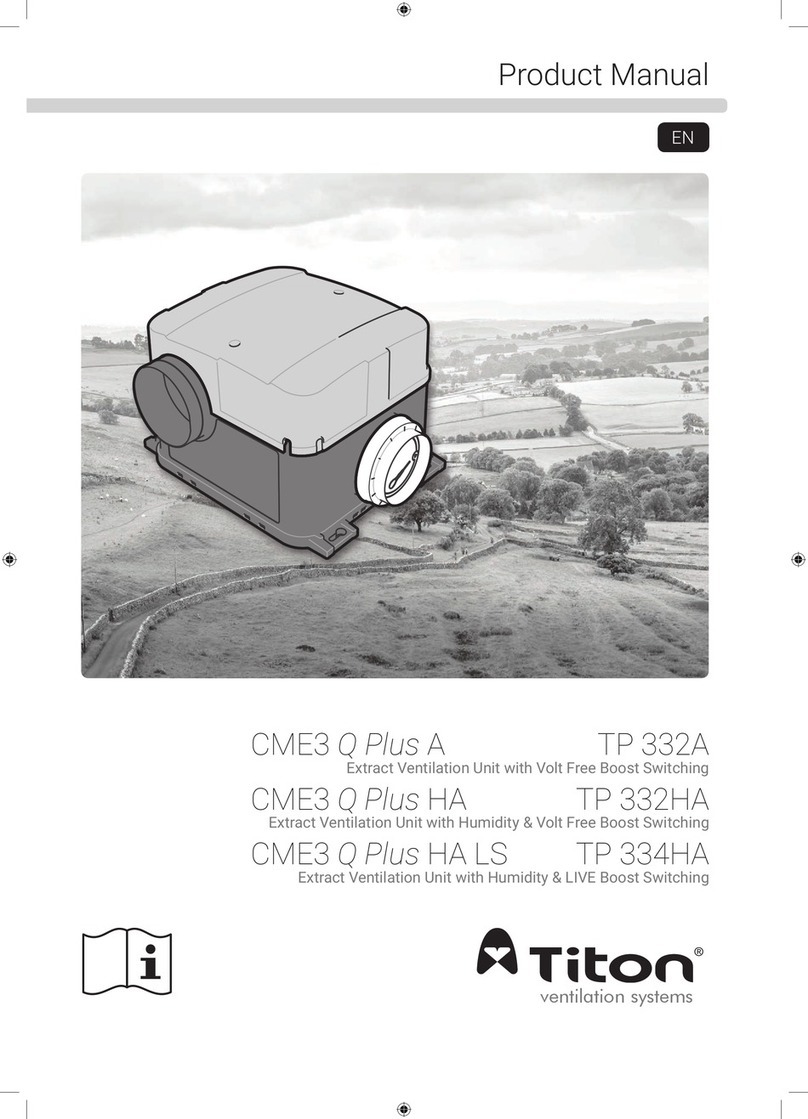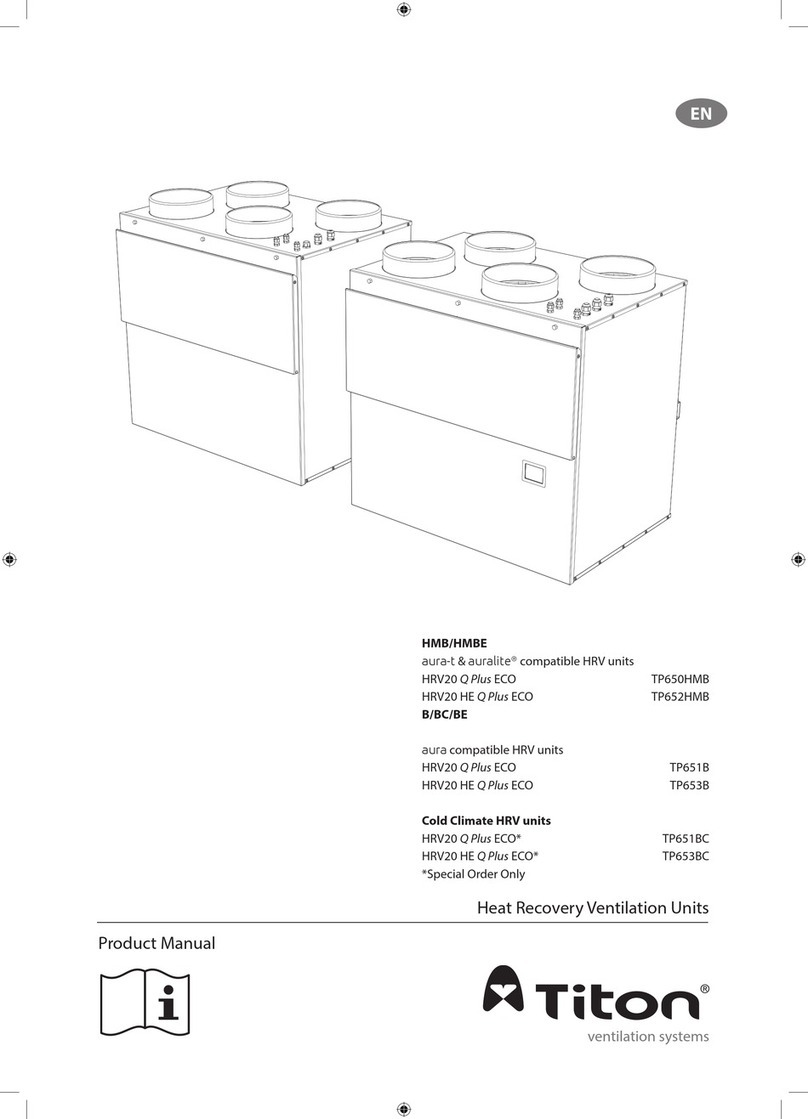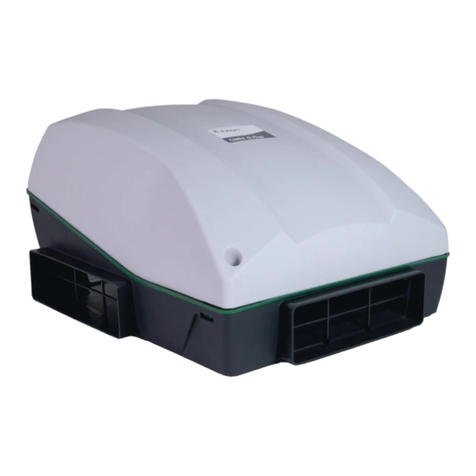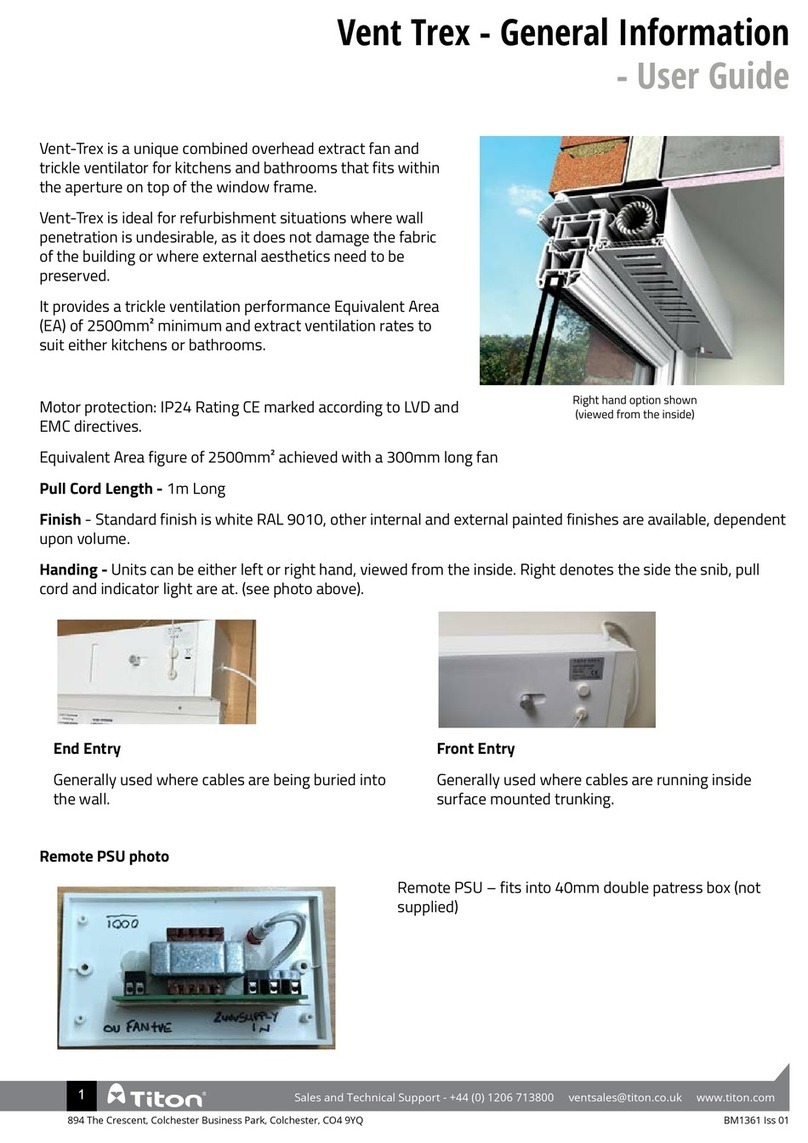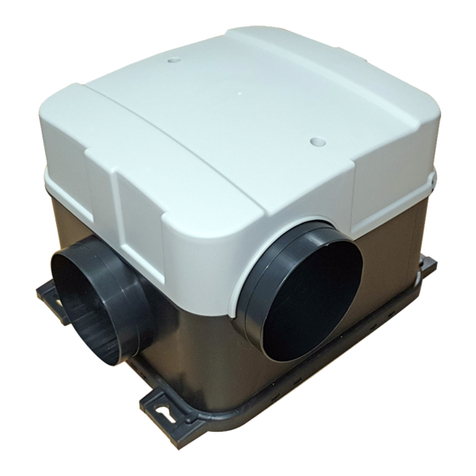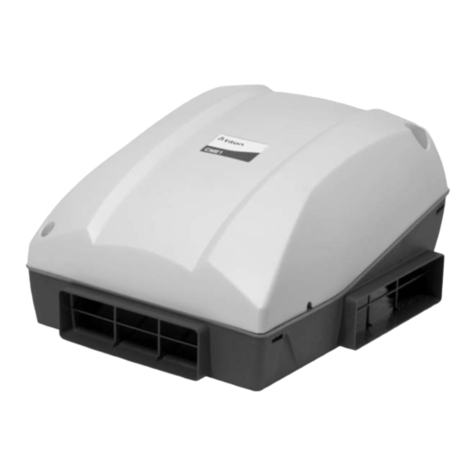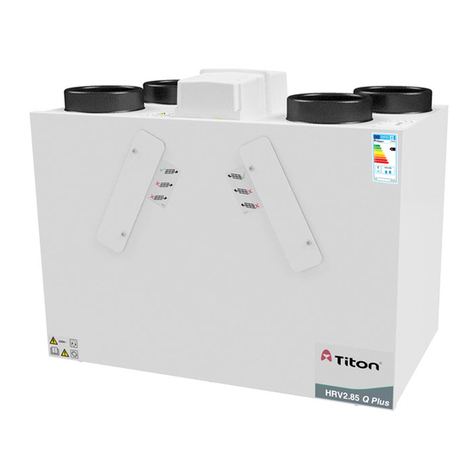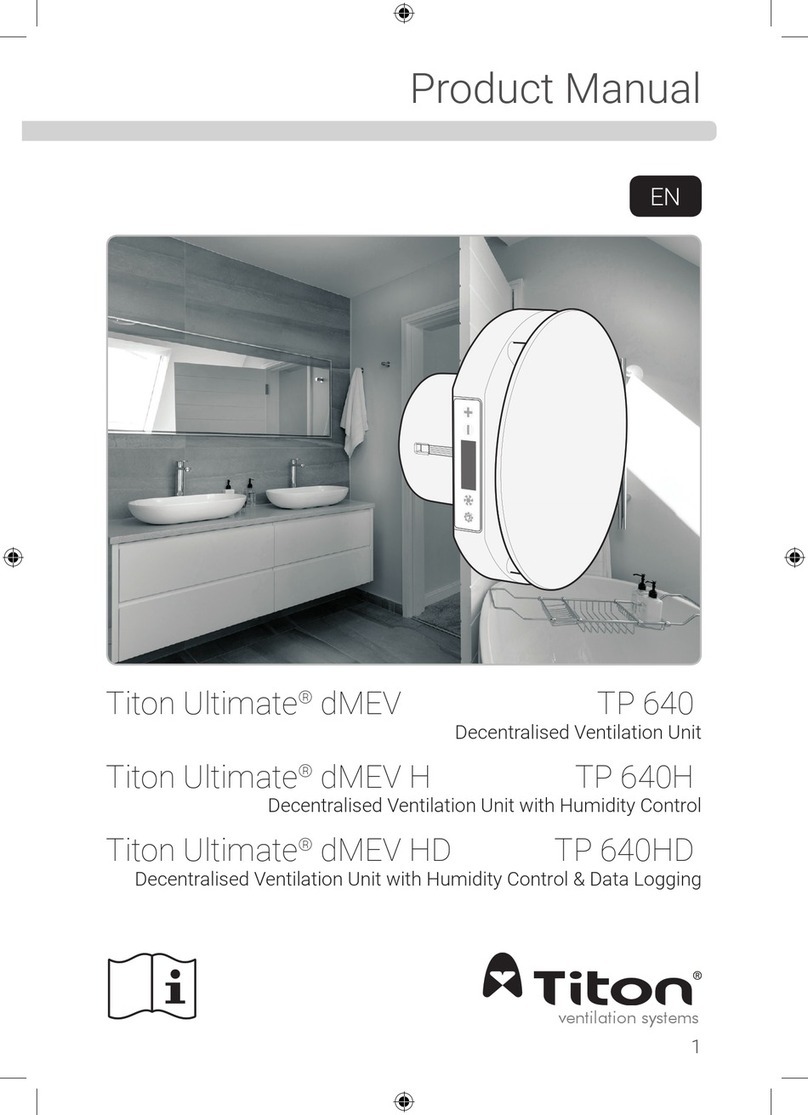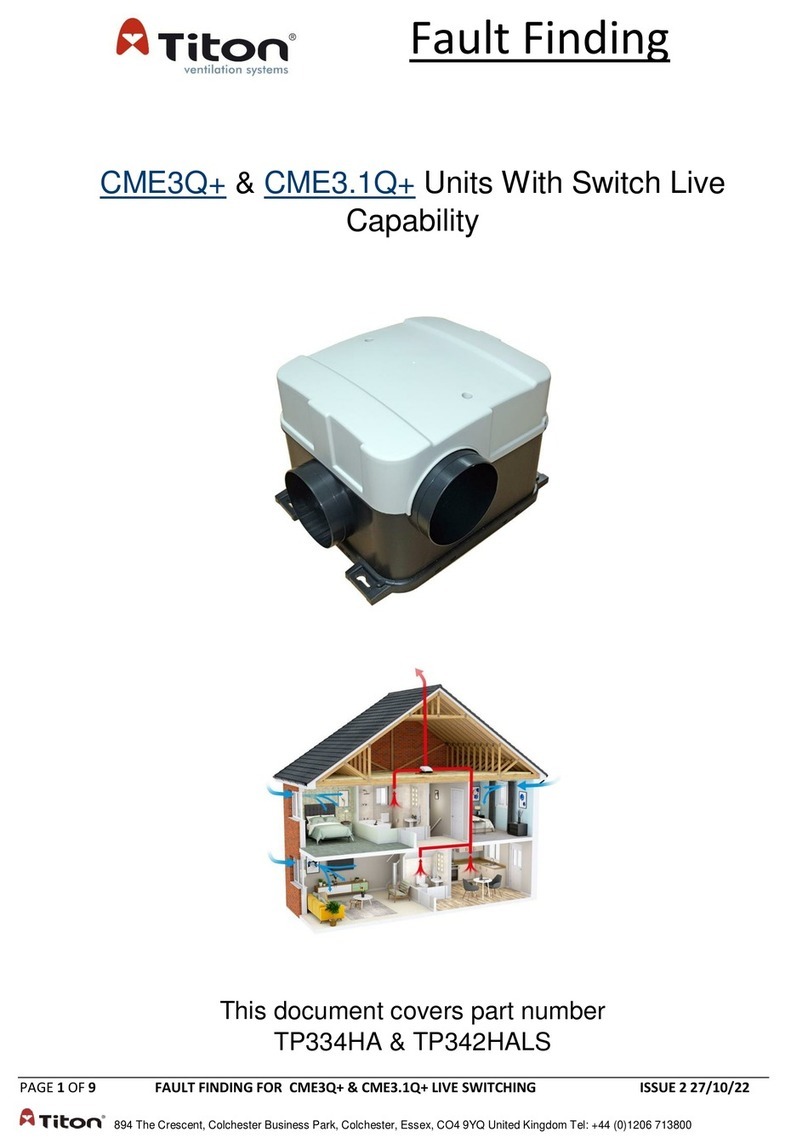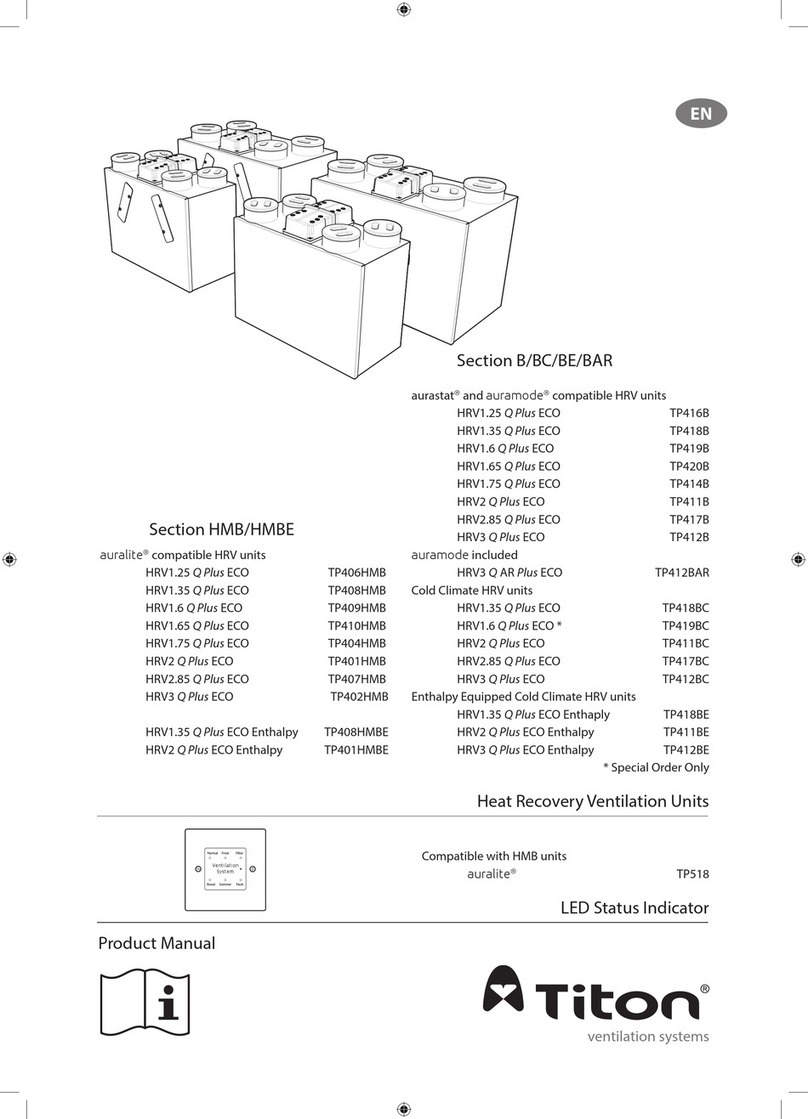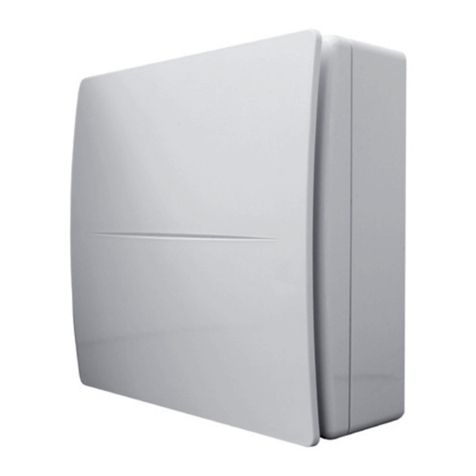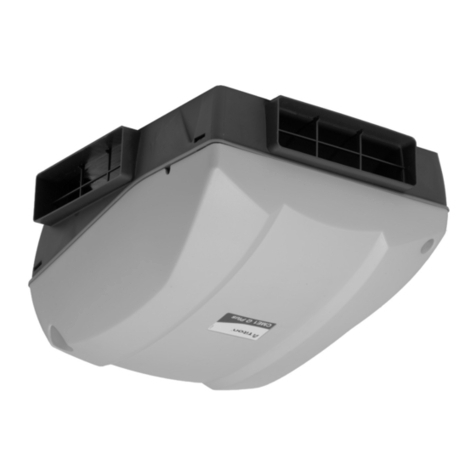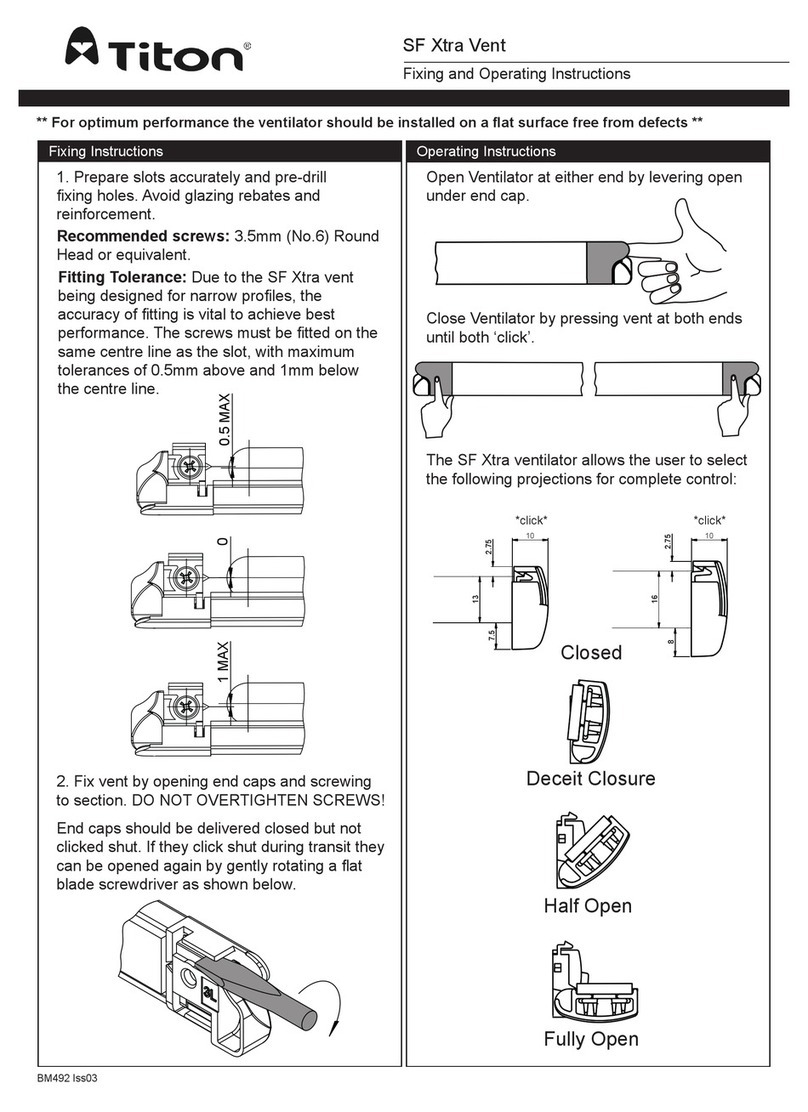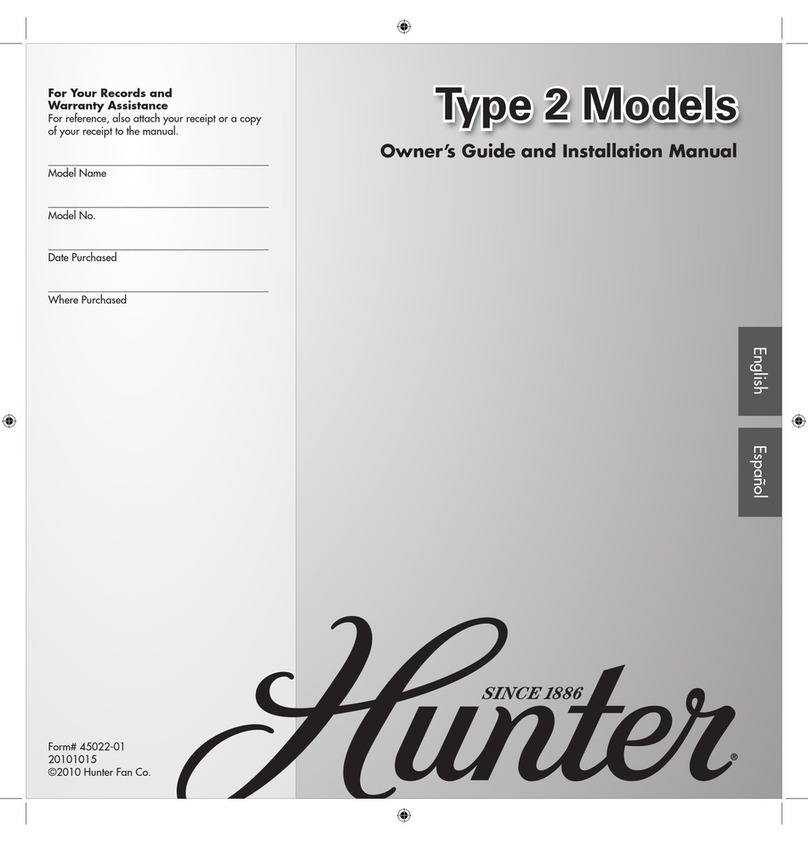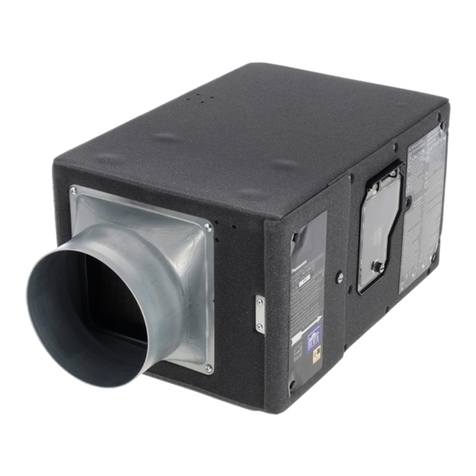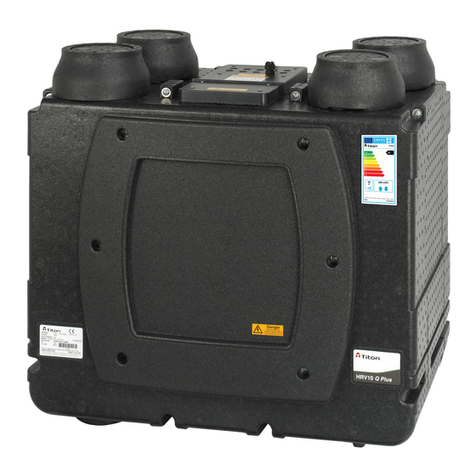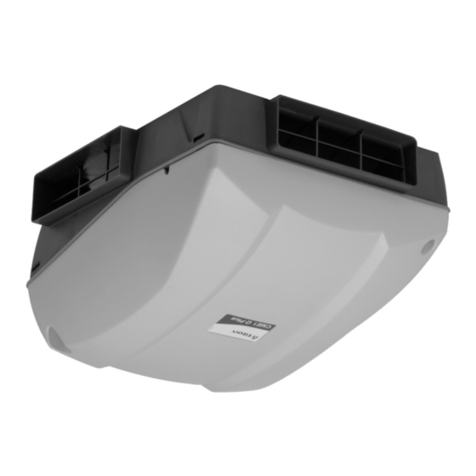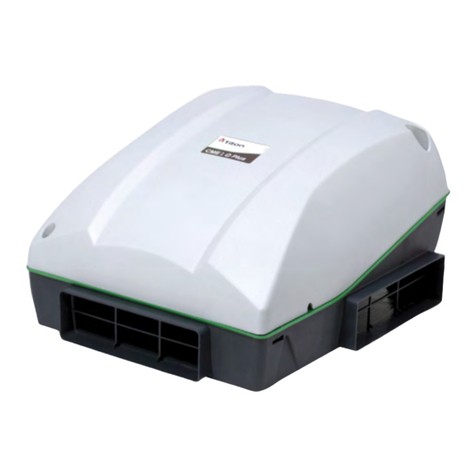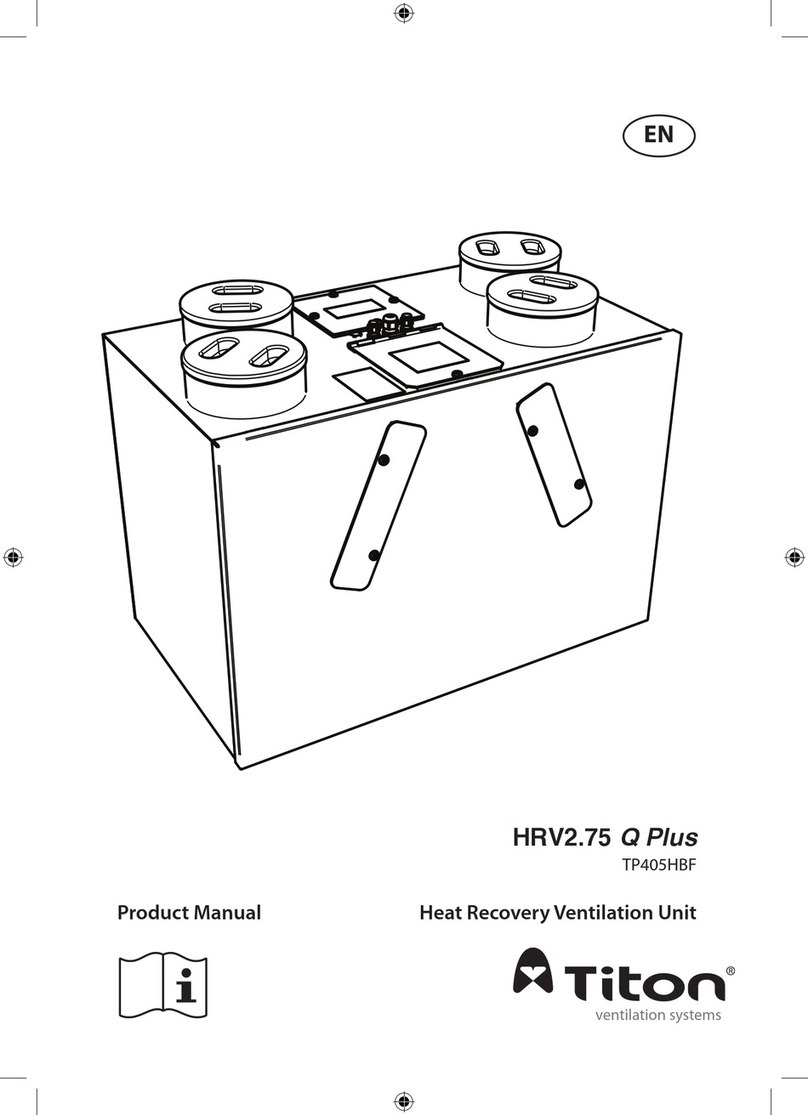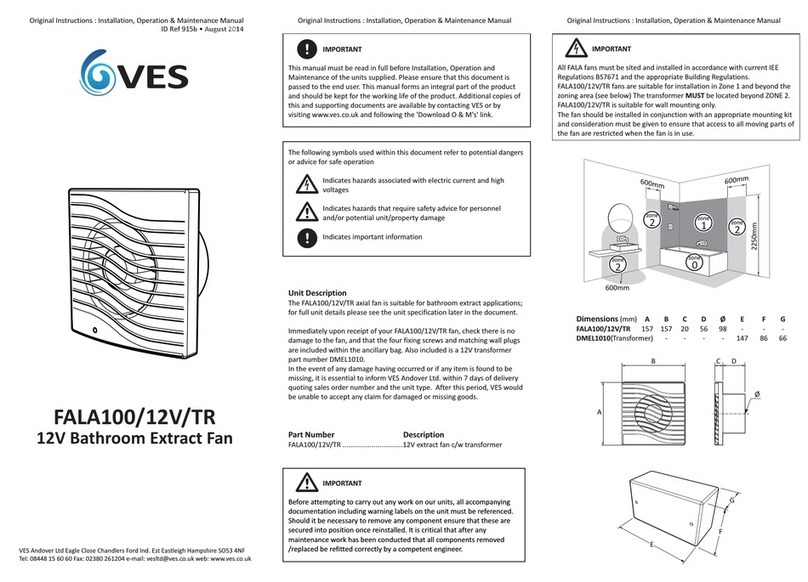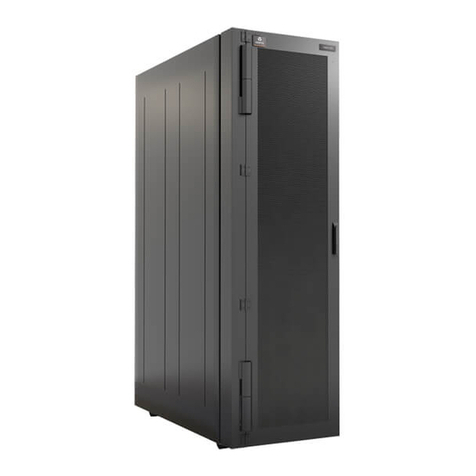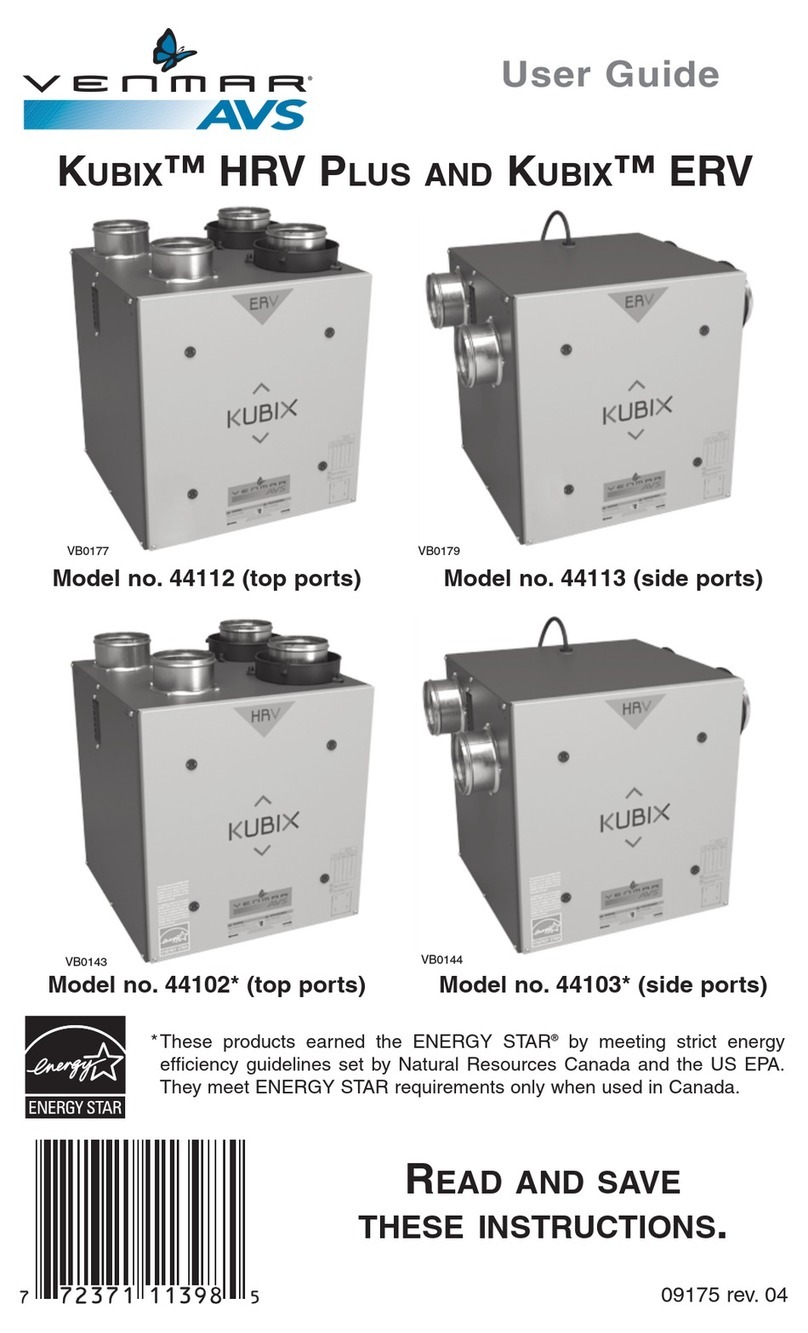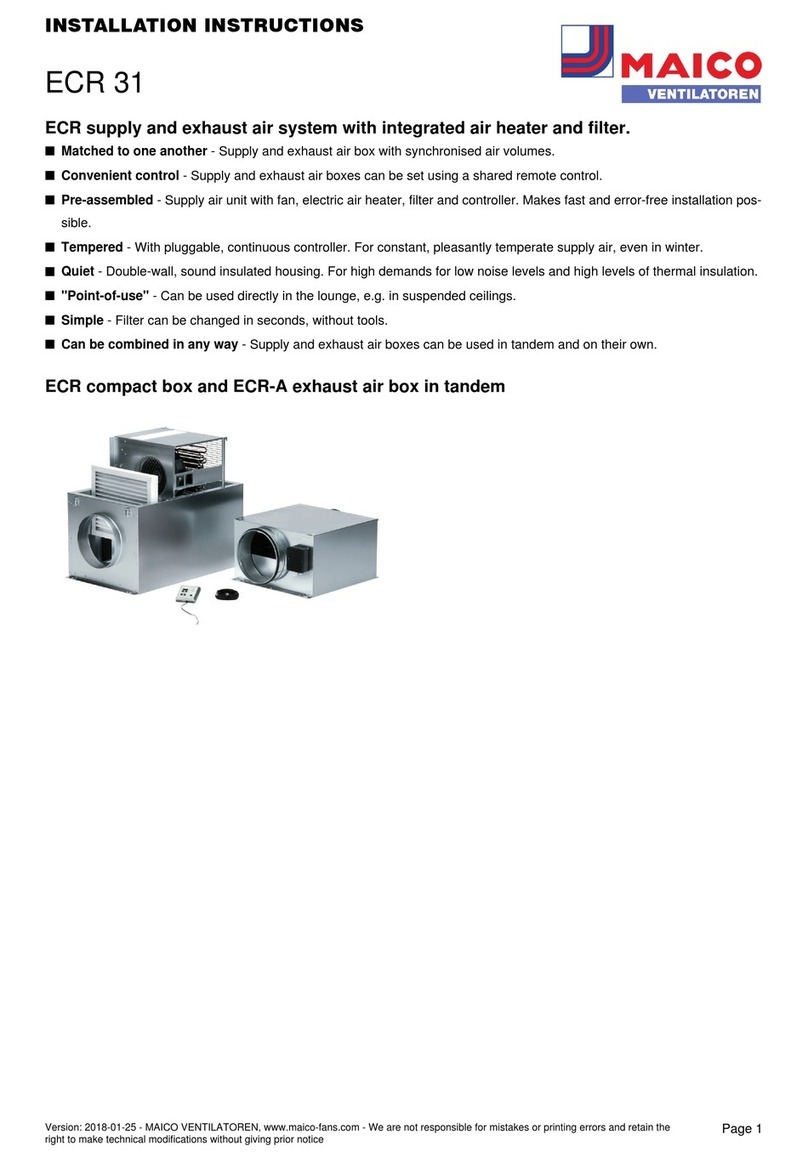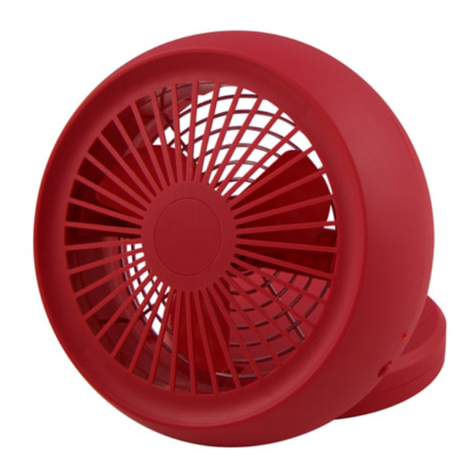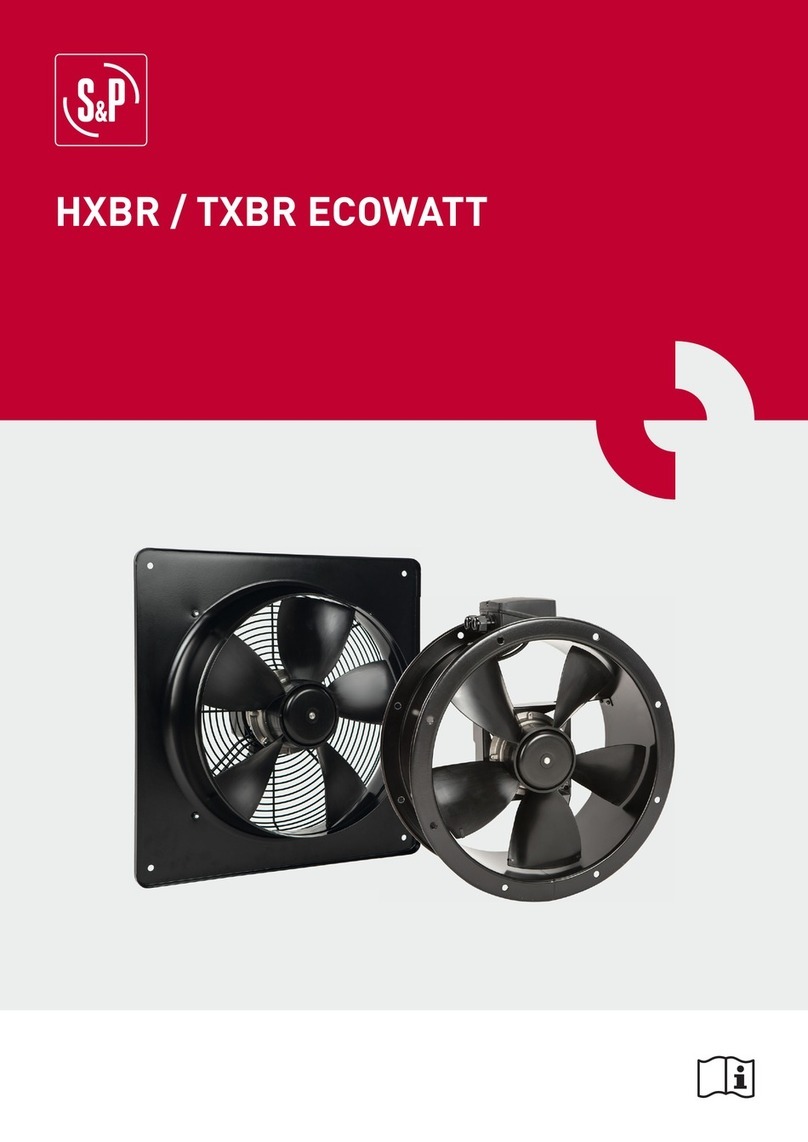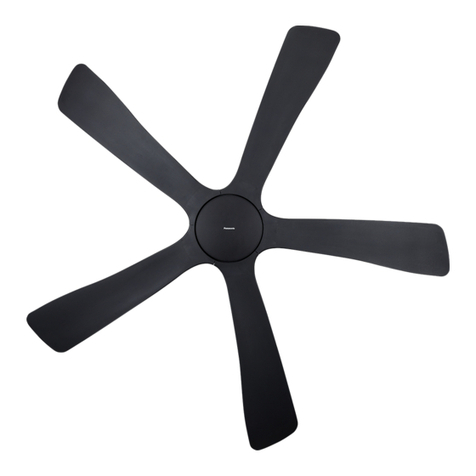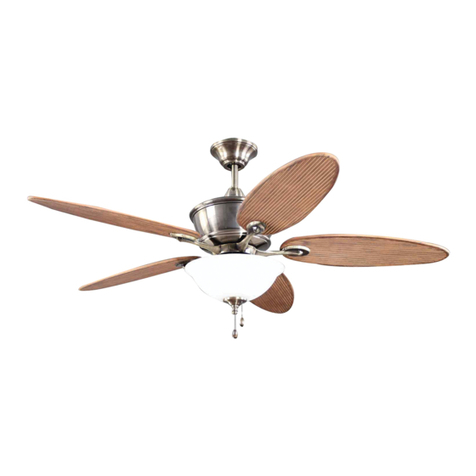2
• Do not immerse the device or its parts in water or other liquids.
• Turn off the main switch whenever a malfunction is detected or when cleaning.
• For installation an omnipolar switch should be incorporated in the fixed wiring, in accordance with the wiring regulations, to provide a full
disconnection under overvoltage category III conditions (contact opening distance equal to or greater than 3mm).
• If the supply cord is damaged, it must be replaced by the manufacturer, its service agent or similarly qualified persons in order to avoid a
hazard.
• Do not obstruct the fan or exhaust grille to ensure optimum air passage.
• Ensure adequate air return into the room in compliance with existing regulations in order to ensure proper device operation.
• If the environment in which the product is installed also houses a fuel-operating device (water heater, methane stove etc., that is not a “sealed
chamber” type), it is essential to ensure adequate air intake, to ensure good combustion and proper equipment operation.
• Install the product so that the impeller is not accessible from the air outlet side as verified by contact with the Test Finger (Test probe “B” of the
norm EN61032) in compliance with the current safety regulations.
• Provision must be made for adequate make up air into the same room as the fan is extracting (air transfer & habitable room background
ventilators)
• Solitude dMEV fans include an airflow sensor which monitors the flow rate and adjusts the speed to maintain this flow. Excessive dust or other
contaminants may impair the sensor accuracy. Periodic cleaning (e.g. vacuum cleaner) is recommended to remove dust from the fan housing
and flow sensor. The sensor is a plug in service replaceable part, running issues due to sensor clogging are not therefore covered under the
product warranty.
• Ceiling installation
In order to guarantee the IPX4 degree of protection against moisture in case of ceiling installation, use the appropriate ceiling mount kit, which
is not included. Use only the rear entry hole for supply cables. If there is a possibility of condensation along the air discharge duct, provide a
drainage system to prevent condensation from discharging into the environment through the fan.
Attention: do not mount the product on the ceiling without this kit.
• Window installation
In case of window installation it is necessary to use the appropriate window kit, which is not included.
Attention: do not mount the product on the window without this kit.
The fan is provided with over-run timer, adjustable from 0 to approx. 30 minutes via trimmer (fig. 15B).
The fan runs continuously at selected trickle speed (set by the jumper switch combination - see figure 16) and can be boosted with a dedicated
ON/OFF switch (or HY, PIR, CO2… sensor) or with a light switch (fig. 14B).
In some jumper switch combinations the “constant ow” mode is activated.
In these cases, the airow detection system will detect the installation duct resistance and also react to external wind conditions to ensure the fan
maintains a constant extraction rate.
This can cause the fan to ramp up and down and may not be required in some applications (it can actually cause noise discomfort).
The product is factory set on a jumper switch combination where the constant ow mode is not activated.
When the external switch is turned on, the fan is boosted. After the external switch is turned off, the fan continues to run at boost speed for a
settable period of time, then it returns to selected trickle speed. The over-run timer function is activated only if the external switch has been on for
at least 60 seconds.
OPERATION
INSTALLATION TYPE SETTING
Installation type can be selected using JUMPERS between the following options: through wall or ducted. See figure 16.
TRICKLE SPEED SETTING
Trickle speed can be selected using JUMPERS among the following options: 6-8-10-13 l/s. See figure 16.
STANDARD CONFORMITY
2014/35/EU Low Voltage Directive (LVD)
2014/30/EU Electromagnetic Compatibility (EMC),
in conformity with the following standards:
Electrical Safety
EN60335-1(2008); EN 60335-2-80(2005); EN 60335-2-80/A2(2009)
Electromagnetic Compatibility
EN 55014-1(2006)+A1+A2; EN 55014-2(1997)+A1(2001)+A2(2008)+IS1(2007)
EN 61000-3-2(2006)+A1(2009)+A2(2009); EN 61000-3-3(2008).
